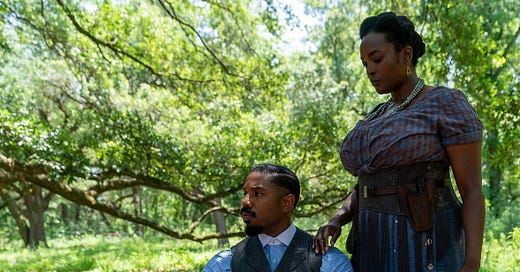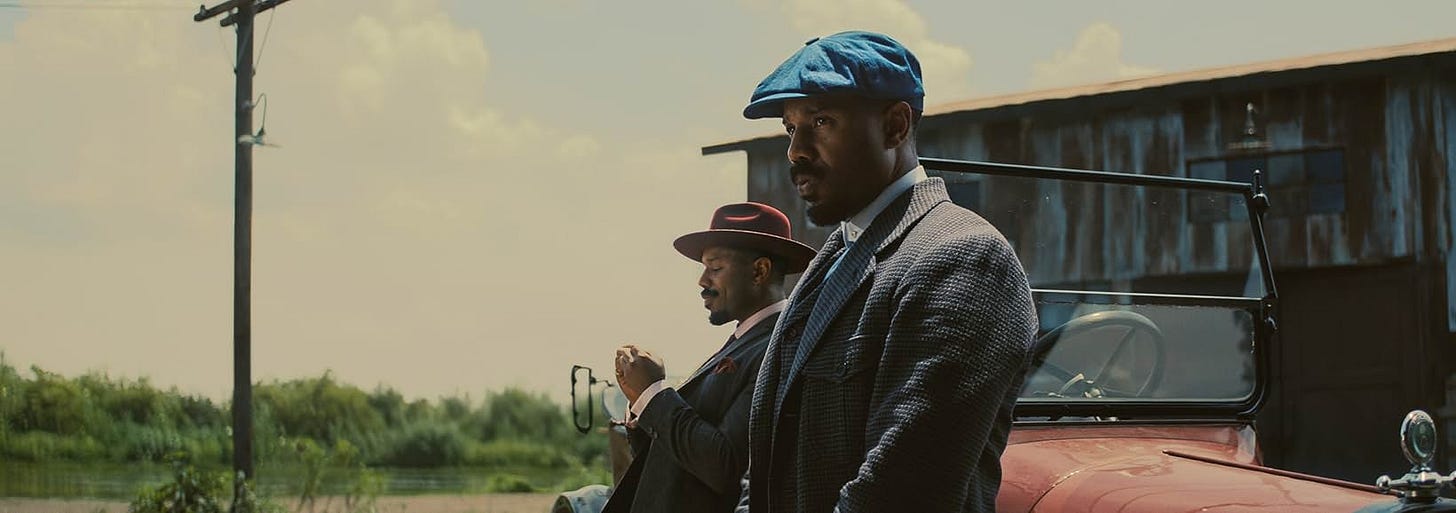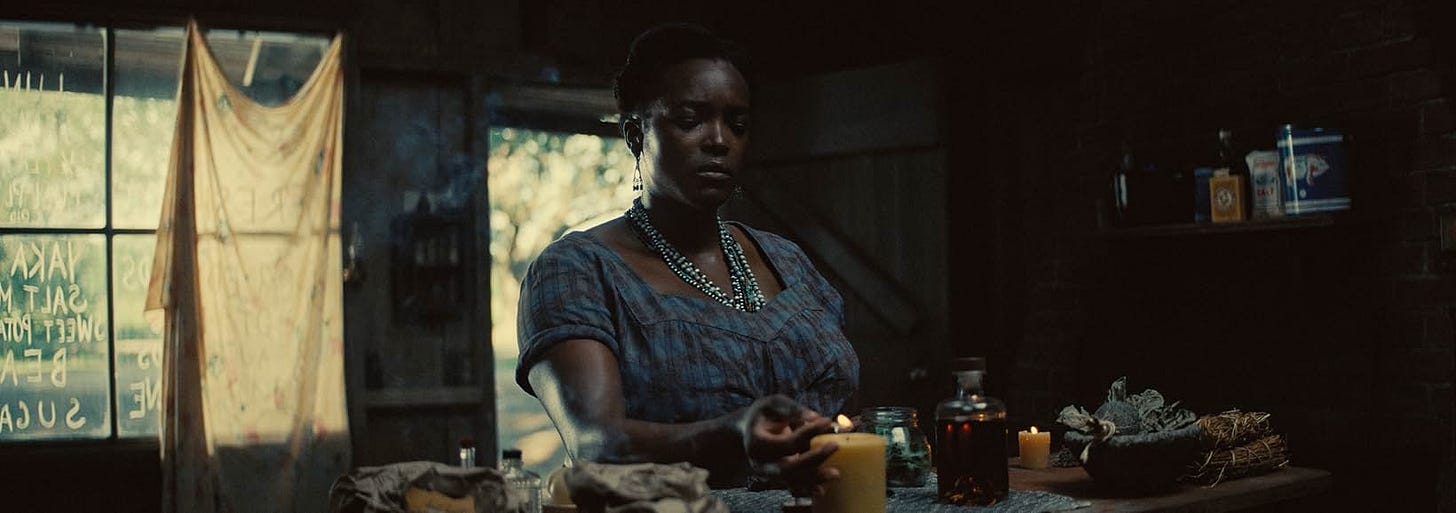I believe in signs. Be it a recurring number, a word, or a phrase — I believe that God is consistently and generously breadcrumbing us with information to affirm where we are and give us glimmers of what’s next. Lately, my sign has been the color blue.
In January of this year, I opened Imani Perry’s tour in song for her newest offering, Black in Blues: How a Color Tells the Story of My People. A few weeks later, an article I was tapped to write for at the end of 2024 had been released into the wild. “5 Minutes That Will Make You Love [Blank],” a series from The New York Times, invites various historians and musicians alike to gush about their favorite tune from a particular instrumentalist, vocalist, or record label. The article I gave my two cents to? 5 Minutes That Will Make You Love Blue Note Records.
I still cannot believe I wrote for the NYT, but I digress.
Call it “woo-woo,” but it feels like, at every turn, the better parts of myself and how I show up in this world are illuminated by this hue.
And then, Sinners came out.
I must preface this write-up by saying that although I am many things, a horror-flick girl is not included in that list—horror, thriller, gore, blood— not my ministry. I am a certified scaredy cat. I watched Get Out through my fingers, which — that’s lowkey the scariest movie of them all because the likelihood of a white family somewhere in the Poconos or Catskills harvesting Black bodies doesn’t feel all too dystopian. I knew Sinners wasn’t my cup of tea, but I went.
I am so glad that I went.
Now granted, I spent the majority of the movie with my head nestled into my roommate’s shoulder (shoutout to Chelsea) and watching through my fingers (old habits die hard), but it was still everything I needed and then some. The cinematography (I watched it in 70mm, 10/10 highly recommend), storyline, and character development — everything about this film is breathtaking. Ryan Coogler’s reverence for each culture shown is admirable. Michael B. Jordan is fine squared. But aside from everything this film offers us, the backdrop of this story is the bedrock of American music (and arguably, global music) as we know it. It is the blues.
Apart from Sinners, another body of work has held my attention: ScHoolBoy Q’s 2024 release BLUE LIPS. This album was one of my favorite rap albums released last year. It is a master class on how to remain true to oneself while also surrendering to evolution (there goes that duality, again). For months, I felt Q’s album was connected to all that I have been experiencing but had trouble articulating it. Sinners was my missing piece.
This essay will journey through the various ways this hue has been sort of prophetic in my life. No, I am not spotting blue Porsches and claiming them as my own (although that’s not such a bad idea). Through these parallels, I will illustrate the expansive ways in which the color blue magnifies Black people. Additionally, I hope to give you, the reader, a gentle reminder that when it boils down to purpose, God (the universe, or whomever you do or don’t believe in) will weave together seemingly minute things to reveal that which is colossal.
FYI: There are quite a few spoilers ahead — if you haven’t see the film yet, save this post and come back later.
Morning Glory Blue — Hoodoo
I couldn’t help but feel vindication wash over me when I realized the seemingly obvious: on the day we are introduced to these characters, Smoke is wearing a blue suit and Stack a red one. While many folks online suspect these colors indicate the twins’ gang affiliations while living in Chicago (more on this later), I immediately thought back to my last essay and the symbiotic nature of these shades. The SmokeStack twins’ return to Mississippi (and ultimate demise) was attributed to their shared greed. However, their approach to acquiring that money differed (e.g., one believed that shelving out free drinks was harmful while the other insisted on them playing the long game). This yin and yang nature is evident in their romantic relationships with Annie and Mary. Both twins showed their love for their significant other the best way they knew how to, even though neither approach was ideal.
But aside from its dualistic capabilities, I’d like to return to the color blue and Smoke. In his seven years away, we learn that Smoke’s life was preserved by Annie’s dealings in hoodoo and root work. The aforementioned book by Imani Perry describes hoodoo as a tool used by our ancestors for “collecting and preserving information to navigate life [prior to emancipation and widespread literacy].” In many ways, hoodoo gave Black folks power in an inevitably powerless life. If mastered correctly, its conjurings allowed them to heal and protect themselves and those around them, with the inverse ringing just as true.
In her work, Perry denotes that this practice also found significance in not only the materials used, but the color of said materials. More often than not, these substances were, you guessed it, various shades of blue.
“But in hoodoo, the color, the blueness of remedies, matters too. Color is not inconsequential in hoodoo the way it is in Western allopathic medicine … Other colors, especially white and red, are used for various remedies, but none are as broadly applicable as blue.” — Imani Perry, Black in Blues
Perry’s chapter dedicated to hoodoo goes on to share a folklore that feels eerily similar to that of Smoke and Annie’s tale:
In one reported story of a root worker’s instructions, a man named Jack was terribly fixed. Somebody had mixed his hair with bluestone and wrapped it inside red flannel with needles running through it, causing him anguish. To unfix him, the root worker rubbed him down with a liniment and then had Jack place eight dimes inside a mojo bag that was tied to hang around his neck and right over his heart. It isn’t clear if Jack was cured, but it was reported that he wore the money-filled mojo bag for a very long time.” — Imani Perry, Black in Blues
The necklace that Annie gifts Smoke protects not only his life but allows him to protect his brother’s as well. Did Annie also instruct Smoke to wear this shade knowing the power it held? Did she herself wear it for these same reasons? Maybe so.
Midnight Blue — The Blues
Imani Perry describes blues music as “a private terrain shared. A crossroads of joy, pain, hurt, just living, and genius.” To a once enslaved people, the blues accompanied them as they, for the first time, navigated freedom (within the confines of Jim Crow, of course). While it carried the weight of the musical expressions that came before it (e.g., spirituals, work songs, etc.), this genre inhabited a new form. A form that, according to Amiri Baraka’s Blues People: Negro Music in White America, a book studied by Coogler in preparation for Sinners, was hinged less on seeking God’s guidance and instead focused more on human accomplishment (Coogler masterfully exhibits this tension in the film). The blues became a vehicle for individualism and storytelling, with subject matter varying in intensity and emotion. Similar to its namesake, the blues is just as vast and colorful as the people who perform it.
The movie Sinners and its utilization of blues music affirms Link’s existence with its arguably most crucial scene. After a long day of bartering and prepping, the SmokeStack twins have opened their juke joint. Drinks are flowing, bodies are swaying, and the room is buzzing with delightful energy. Delta Slim kicks off the night with a performance and then hands the mic over to Sammy, the young virtuosic musician and key figure of the film. Sammy begins to sing and strum, and what happens next feels revelatory. His musical offering summons what can only be described as ghosts, but they are not just of the past. These spirits hail from different ethnic backgrounds and generations, revealing what will come. A Bootsy Collins figure shreds an electric guitar next to Sammy; a DJ scratches his turntable on stage while shouting out Sammy’s alias “Preacher Boy;” West Coast Hip-Hop synths pierce through his baritone voice; a group of Black women are even found twerking near the bar. The scene ends with the natural and supernatural coexisting harmoniously as the club erupts into flames.
[Another] Link in The Chain was birthed out of my deep love for Hip-Hop while studying Jazz in academia. It came from this instinctual knowing that the music I have long revered was a part of something bigger than me and having a desire to piece, or link, it all together. This moment in Sinners reaffirms what we know to be true about Black folks’ contribution to our shared musical fabric and affirms this work with which I have entered into a covenant with. The blues fashioned the way in which modern artists create. It is the most significant link of them all.
Cobalt Blue — Blue Lips
Let's discuss ScHoolBoy Q. Externally, his place in this story is apparent. Q is a rapper and thus a child of the blues; he is a direct predecessor and beneficiary of Sammy's gift. Q is also tied to Smoke: a man who chose the path of gang affiliation (both blue, by the way) but ultimately found restoration through laying it down (SN: in an interview with Nadeska, Q says the following re: being a Crip: "I'm never gonna partake in something illegal, but I'm not some dropout" LOL). However, there is more to his connection to the movie than meets the eye.
At the beginning of Sinners, we find the SmokeStack twins waiting on a slumlord/Klansman to purchase property that would soon become their juke joint. The man arrives, and the three examine the building's interior. One of the twins notices that parts of the floor are stained, presumably by the blood of Black folks. The slumlord shrugs it off.
Fast forward to a 21st-century reality, seemingly far removed from the story of Smoke and Stack: ScHoolBoy Q films the music video for his song Nunu on the Evergreen Plantation in Edgar, Louisiana. With twenty-two slave cabins, a "Big House" (as described via the official website), and several other on-site infrastructures such as stables and a separate kitchen, this plantation remains a fully intact and functioning organism. The opening shot of Q's video finds him sitting on the porch of a slave cabin, holding his phone in hand and rapping along to the track.
In Nunu, Q fancies a life where he sees his big homie "stuntin','" or having access to a lifestyle he envies. The rapper drops out of school, presumably follows in the person (or persona)'s footsteps, and finds success. By the song's end, we see Q returning to his home and gloating about his newfound fame.
"I had to go and run it up/Now I can fill the stadium/I took a chance and really won/I turnt the table, grabbed the gun/I had the label goin' dumb" — ScHoolBoy Q, Nunu
After rapping this verse, he hops off the porch's ledge and walks out of frame. The next scene starts with a tight shot that pans out, showing Q leaning off the Big House's balcony railing. As the shot widens, the rapper's arms open up, illustrating a sense of conquest.
These shots of Q evoke a feeling similar to the SmokeStack twins returning to Clarksdale to purchase the juke joint. Both are indicative of a homecoming of sorts. Although there are centuries that separate Q from his return, their sentiments are similar: the three men reclaim a space disenfranchised Black folks once occupied.
Filming on the Evergreen Plantation is not the only way ScHoolBoy Q attempts to right various wrongs— be it the wrongs inflicted onto those who came before him or the wrongs he has committed himself. In an interview with The Rolling Stone, the rapper defines Blue Lips as "an extension of [his] life. [The project is] past, present, and future." "I did this, I did that," the rapper states. "I feel ashamed for saying this, but it's all good." He talks plainly about not falling into the trap of "cooning" or creating a caricature of himself based on deep-rooted stereotypes. I believe that Smoke and Stack, who were also not perfect in their execution, also held similar desires.
Cerulean — Conclusion
There are very few colors that I believe describe a people as well as the color blue does the Black American. As I stated earlier, it is easy for me to believe that these pieces were intentionally laid out for me so that I could puzzle them together. After sitting with these thoughts though, I’m starting to believe that I am drawn to blue because it is instinctual. It is my native tongue. My ancestors knew this color well, and it it my duty to reverence to the best of my ability.








